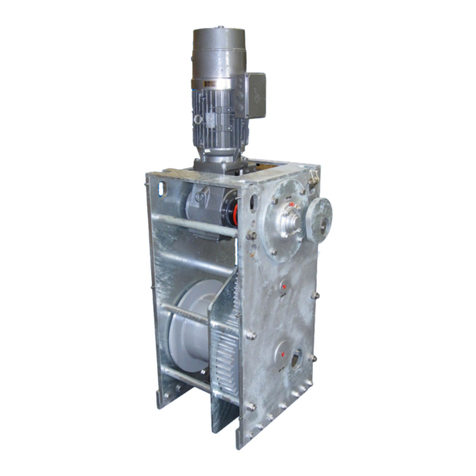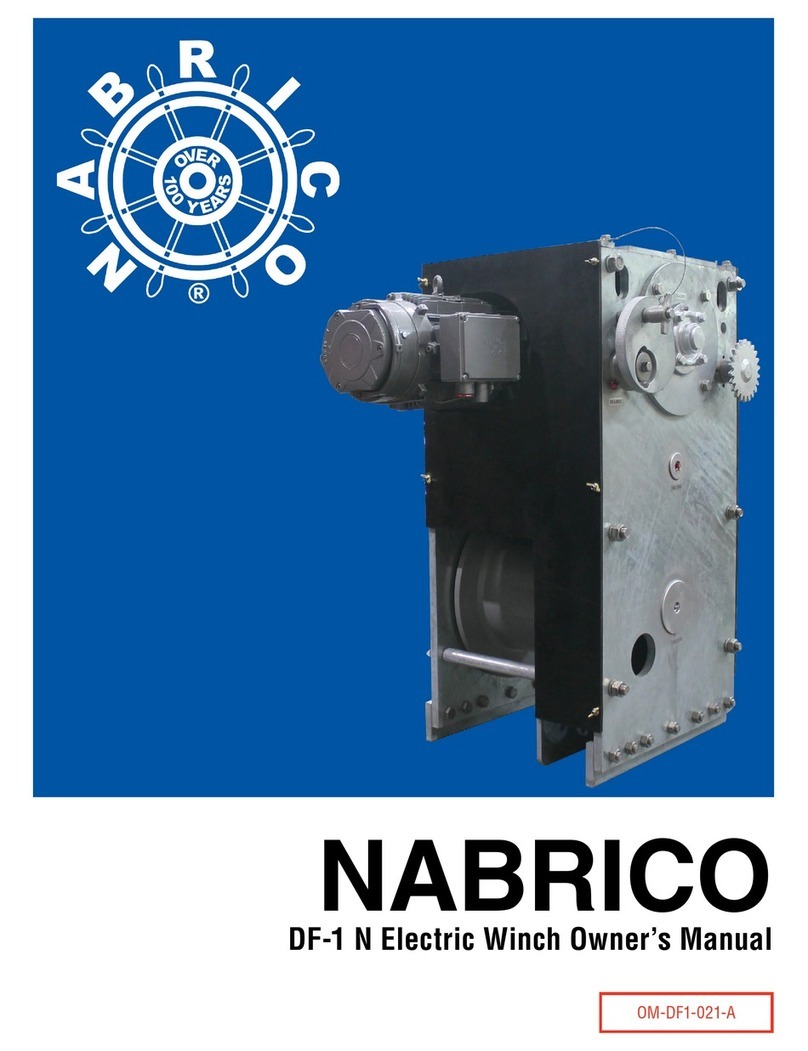
4
NABRICO DF-356 Upfit Winch with FASST WinderTM Owner’s Manual
OM-DF356FST-001-A
SAFETY INFORMATION
CAUTION
Prior to installing and operating the winch, please read this manual thoroughly and carefully. Keep this
manual and all other instructions accessible at all times.
The Occupational Safety and Health Act of 1970 states that it is the employer’s responsibility to provide
a workplace free of hazard. To this end, all equipment should be installed, operated and maintained in
compliance with applicable trade, industrial, federal, state and local regulations. It is the equipment owner’s
responsibility to obtain copies of these regulations and to determine the suitability of the equipment for the
equipment owner’s intended use.
Although this manual will help you become familiar with the basic operation of the winch, it is by no means
a substitute for proper training by your company in the safe use of winches, barge rigging and other marine
equipment. This manual suggests methods of operation, but ultimately, the owners and operators of the
equipment are responsible for determining whether a particular method of operation is safe and appropriate
for the equipment being operated. Only individuals trained in the proper use of winches, barge rigging and
other marine equipment should operate these winches.
The typical operating environment of barge and towboat winches often includes very high forces, and the
potential hazards associated with these high forces should not be underestimated. Improper installation or
incorrect or unsafe use could result in injury or death to persons or cause equipment failure or damage.
Recommended Information for Safe Operation:
CAUTION
• Check lubrication before use.
• Do not apply tension to the winch unless there are 4 complete wraps of rope on the drum.
• Do not operate the equipment unless you have a firm stance on a non-slippery surface.
• Do not wrap the wire rope around the load. This will damage the wire rope and could cause the load to
escape. Rigging connectors are strongly recommended to secure the wire rope to the load.
• Keep fingers, loose clothing and any foreign objects away while operating the equipment.
• Do not divert attention away while operating the equipment. Stay alert to the possibility of accidents and
try to prevent them from happening.
• Always remain to the side of the equipment while in operation.
• Never operate the equipment from the front or when bystanders are in front of it.
• Operators and bystanders should stay clear of any load and the wire rope while the equipment is
operating.
• Avoid shock loads by starting and stopping the equipment smoothly. Shock loads can over load the
equipment which may cause damage.
• Under no circumstances should any equipment be used to move, raise or lower a person(s) or
equipment.
NOTICE
Inspect the equipment carefully at least once a month for loose fasteners, worn gears and pawls,
cracked welds and other damaged parts. If any worn, cracked or damaged parts are found, stop
use immediately and remove equipment from service until all appropriate repairs are completely
made.






























